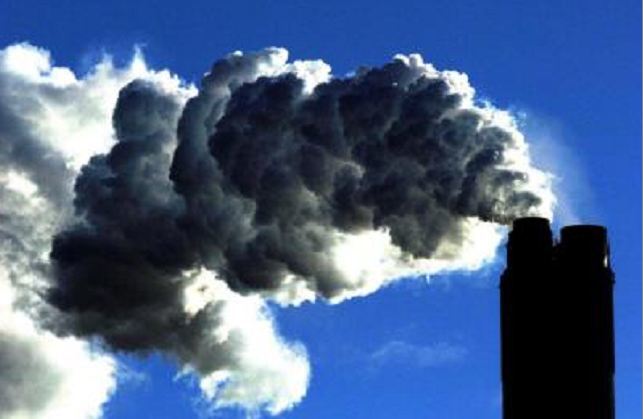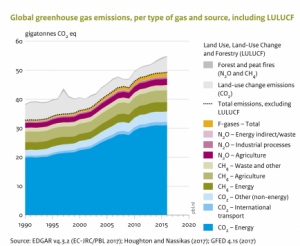
A report published by the Netherlands Environmental Assessment Agency (NEAA) shows global carbon dioxide emission levels remained constant in 2016, continuing three years of stability.
The figures reveal global CO2 emission levels remained roughly flat in 2015 and 2016.
It is thought that the recent downturn in the growth of CO2 is chiefly due to lower coal consumptions and a widespread shift in energy usage towards gas and increasingly renewables for power generation.
The announcement is a welcome sign that measures adopted to combat climate change may be starting to have an effect.
However total global greenhouse gas emissions continued to rise in 2016, by about 0.5%.
This is due to a steady 1% rise in other non-Co2 emissions in 2016.
Emissions of non- CO2 greenhouse gases, including Methane, nitrous oxide and fluorinated gases, make up nearly 28% of all greenhouse gas emissions and thus contribute significantly to global warming.
Of these, methane is by far the largest component contributing 19% of global emissions. Fossil fuel production, cattle and rice production are its main sources.
In total the five largest emitting countries plus the European Union released up 63% of the world’s CO2 emissions in 2016.
However, aside from India which saw a significant increase of 4.7% in its greenhouse gas emissions, the United States and Russia both show a decreasing trend of about -2% as did Japan of -1.3%. China and the European Union stayed at roughly the same level as in 2015.
As reported by the Guardian, Prof Lord Nicholas Stern at the London School of Economics and president of the British Academy said: “These results are a welcome indication that we are nearing the peak in global annual emissions of greenhouse gases.”
“To realise the goals of the Paris agreement and hold the increase in global average temperature to well below 2C, we must reach peak emissions as soon as possible and then achieve a rapid decline soon afterwards.”
Recommended for you

